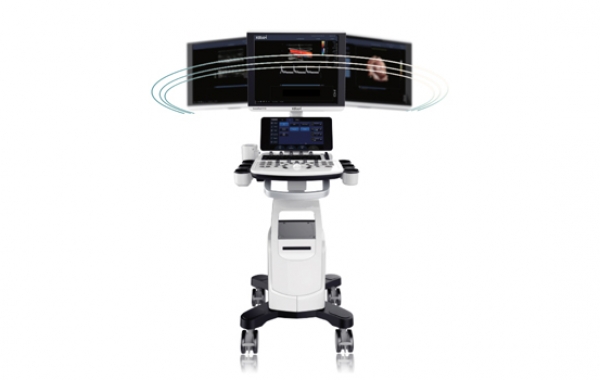Understanding the Benefits of Color Doppler Sonography in Modern Healthcare
In the fast-evolving world of medical diagnostics, accurate and timely assessment is crucial for effective treatment. One such revolutionary tool that has transformed the landscape of diagnostic imaging is color doppler sonography. This non-invasive imaging technique is widely used to evaluate blood flow and diagnose a variety of medical conditions. With its real-time imaging capabilities and ability to provide detailed information, color doppler sonography has become an invaluable asset in modern healthcare.
What is Color Doppler Sonography?
Color doppler sonography is an advanced ultrasound-based imaging technique that provides real-time visualization of blood flow within blood vessels. Unlike traditional ultrasound, which only offers static images, color doppler sonography uses color-coded maps to represent the speed and direction of blood flow. This unique feature allows healthcare professionals to assess the vascular system more effectively, detect blockages, and monitor the health of organs by observing blood flow dynamics.
Key Benefits of Color Doppler Sonography
Non-Invasive and Safe: One of the main advantages of color doppler sonography is its non-invasive nature. The procedure does not involve any incisions or exposure to ionizing radiation, making it a safe diagnostic option for patients of all ages, including pregnant women.
Accurate Diagnosis: Color doppler sonography provides detailed information about blood flow patterns, enabling accurate diagnosis of various conditions such as deep vein thrombosis, arterial blockages, aneurysms, and more. This level of precision is critical in developing effective treatment plans.
Real-Time Visualization: The real-time imaging capabilities of color doppler sonography allow healthcare providers to make immediate assessments. This is particularly beneficial in emergency situations where quick decisions are crucial for patient care.
Monitoring Treatment Progress: Color doppler sonography is also used to monitor the effectiveness of treatments. For example, after surgical procedures or during the management of chronic conditions, clinicians can use this technique to assess how well blood flow is being restored or maintained.
Versatile Applications: The versatility of color doppler sonography makes it suitable for examining various parts of the body, including the heart, liver, kidneys, and limbs. It is also extensively used in prenatal care to monitor fetal health and placental blood flow, ensuring a safe pregnancy.
Applications of Color Doppler Sonography
Color doppler sonography finds its applications across various medical disciplines:
Cardiology: It is used to evaluate blood flow in the heart and detect conditions such as heart valve defects, congenital heart diseases, and blood clots.
Obstetrics and Gynecology: It helps monitor the health of the fetus and detect any abnormalities in the umbilical cord or placenta.
Nephrology: Color doppler sonography is utilized to assess blood flow in the kidneys, helping detect conditions like renal artery stenosis.
Vascular Surgery: It assists in identifying arterial blockages and vascular abnormalities, aiding in pre-surgical planning.
Trivitron Healthcare: Leading the Way in Color Doppler Sonography
As a pioneer in medical technology, Trivitron Healthcare is at the forefront of providing state-of-the-art color doppler sonography solutions. With its commitment to innovation and quality, Trivitron offers advanced imaging systems designed to meet the diverse needs of healthcare providers. Their color doppler sonography equipment delivers high-resolution images and precise blood flow analysis, enhancing diagnostic capabilities and patient care globally.
By integrating the latest technological advancements, Trivitron Healthcare continues to empower healthcare professionals with the tools they need to deliver accurate diagnoses and improve patient outcomes.
What is Color Doppler Sonography?
Color doppler sonography is an advanced ultrasound-based imaging technique that provides real-time visualization of blood flow within blood vessels. Unlike traditional ultrasound, which only offers static images, color doppler sonography uses color-coded maps to represent the speed and direction of blood flow. This unique feature allows healthcare professionals to assess the vascular system more effectively, detect blockages, and monitor the health of organs by observing blood flow dynamics.
Key Benefits of Color Doppler Sonography
Non-Invasive and Safe: One of the main advantages of color doppler sonography is its non-invasive nature. The procedure does not involve any incisions or exposure to ionizing radiation, making it a safe diagnostic option for patients of all ages, including pregnant women.
Accurate Diagnosis: Color doppler sonography provides detailed information about blood flow patterns, enabling accurate diagnosis of various conditions such as deep vein thrombosis, arterial blockages, aneurysms, and more. This level of precision is critical in developing effective treatment plans.
Real-Time Visualization: The real-time imaging capabilities of color doppler sonography allow healthcare providers to make immediate assessments. This is particularly beneficial in emergency situations where quick decisions are crucial for patient care.
Monitoring Treatment Progress: Color doppler sonography is also used to monitor the effectiveness of treatments. For example, after surgical procedures or during the management of chronic conditions, clinicians can use this technique to assess how well blood flow is being restored or maintained.
Versatile Applications: The versatility of color doppler sonography makes it suitable for examining various parts of the body, including the heart, liver, kidneys, and limbs. It is also extensively used in prenatal care to monitor fetal health and placental blood flow, ensuring a safe pregnancy.
Applications of Color Doppler Sonography
Color doppler sonography finds its applications across various medical disciplines:
Cardiology: It is used to evaluate blood flow in the heart and detect conditions such as heart valve defects, congenital heart diseases, and blood clots.
Obstetrics and Gynecology: It helps monitor the health of the fetus and detect any abnormalities in the umbilical cord or placenta.
Nephrology: Color doppler sonography is utilized to assess blood flow in the kidneys, helping detect conditions like renal artery stenosis.
Vascular Surgery: It assists in identifying arterial blockages and vascular abnormalities, aiding in pre-surgical planning.
Trivitron Healthcare: Leading the Way in Color Doppler Sonography
As a pioneer in medical technology, Trivitron Healthcare is at the forefront of providing state-of-the-art color doppler sonography solutions. With its commitment to innovation and quality, Trivitron offers advanced imaging systems designed to meet the diverse needs of healthcare providers. Their color doppler sonography equipment delivers high-resolution images and precise blood flow analysis, enhancing diagnostic capabilities and patient care globally.
By integrating the latest technological advancements, Trivitron Healthcare continues to empower healthcare professionals with the tools they need to deliver accurate diagnoses and improve patient outcomes.



Comments
Post a Comment